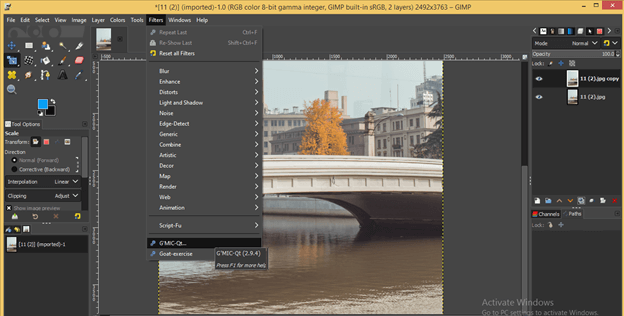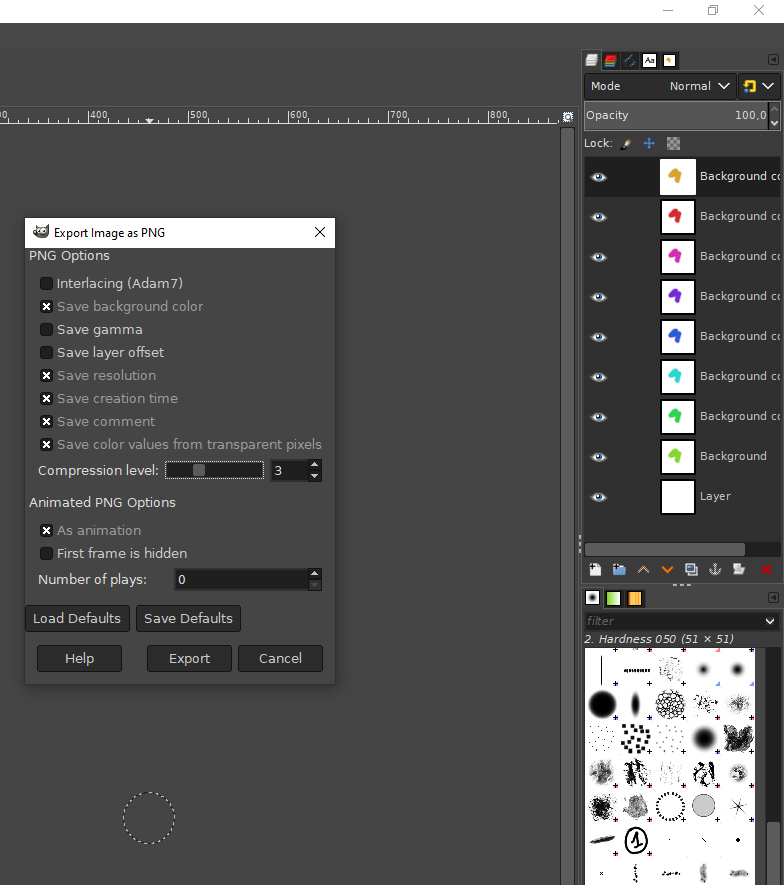

You can, check the tool options in the Rectangle and Ellipse selector (or the Crop tool). (04-20-2021, 06:13 PM)rickk Wrote: Which wouldn't all be bad, in fact sometimes when I'm trying to create a selection exactly 250 pixels wide, centered over an image portion that is 231 pixels wide, I often wish that I could specify the anchor points for the selection with numeric coordinates rather than play "bouncy-bouncy" with my cursor You can even drag the preview around your desktop. To check if the timing is good, you can preview the animation using the Filters Animation Animation Playback. Just double-click the layer comment in the layers’ window and a delay in ms enclosed in brackets (). That's the whole difference between a terminal and a GUI. In GIMP you specify the delay as a layer comment. (1) Since you have GIMP installed, time to run it. > Its five frame animation changing colors of tiny rectangles.

You can even reuse it for something a tad bigger or smaller, or even slightly different. The animation I made for the tutorial shown here. But once you have the right combo, you can reuse it very easily. Sorry, that's just the mental impression it gave me. (04-20-2021, 06:13 PM)rickk Wrote: Perhaps I'm taking things too literal, but the docs I read describe the program as a command-line graphics program, invoking visions of having to enter an instruction accompanied by scads of parameters and cartesian coordinates at a command prompt to draw a lineĭRAW -Line -Yellow -Bold -Curved (between) 0,0 and 8,47 -Gradient -Left In retrospect, I probably should have just made the train shorter.Live and learn, So, what you see is a frankenstein of sorts where I created the animation fast to co-exist with the programs limitations, and then inserted a longer frame duration after the fact, trying to make the train viewable. But the animation is so jerky.Īt the original frame rate, the train went by so fast, you could hardly distinguish individual cars. But if I really sped things up (meaning reduced frame count), then the program could survive long enough to complete it's task. If I ran the animation at a realistic speed, the program ran out of memory, and it crashed. An animated gif is made up of many pictures called frames. I made the following like 15 years ago, using that program, but ran into a problem with address space. The animated pixel art you see on my site are called animated gifs gif is a type of image. I see, thanks! I had a program once that did something similar, under OS/2.long time ago. The background is a long image, then chopped up into frames using ImageMagick. Once you have it installed, come on back to this chapter and have some fun.īe aware that this chapter covers topics and terminology specific to traditional hand-drawn animation.(04-16-2021, 07:39 AM)rich2005 Wrote: A mixture of process. You can create your own scripts or use the ones. It is a scripting language that allows you to automate frequent, or complicated tasks. Script-Fu is similar to Macros in Windows, but more powerful. If you don't already have it, flip ahead to Chapter 21 and read the section on installing GAP. GIMP provides a couple of ways of creating animated GIFs. That means to get the most use out of this part in the book, you need to make sure you have GAP installed on your computer. The next chapter covers how you can use GAP's features to let you use GIMP's tools on videos and animations that have already been produced. This chapter covers the use of GIMP to create those simple animated GIFs as well the use of GAP for more advanced animation projects. But when you add on the tools and features provided by GIMP Animation Package (GIMP-GAP or GAP for short it's a lot easier than saying the GNU's Not Unix Image Manipulation Program Animation Package), the animation possibilities with GIMP become even broader. Even without any additional extensions, the official release of GIMP has been able to generate animated GIF files for years. A simple example of a problem this script might solve: you have an animation, but you want to.

It's one of the things that many people don't realize about it. It makes heavy use of Layer Groups, introduced in GIMP 2.8. Using traditional animation methods in GIMP Making animations from layers and layers from animations


 0 kommentar(er)
0 kommentar(er)
